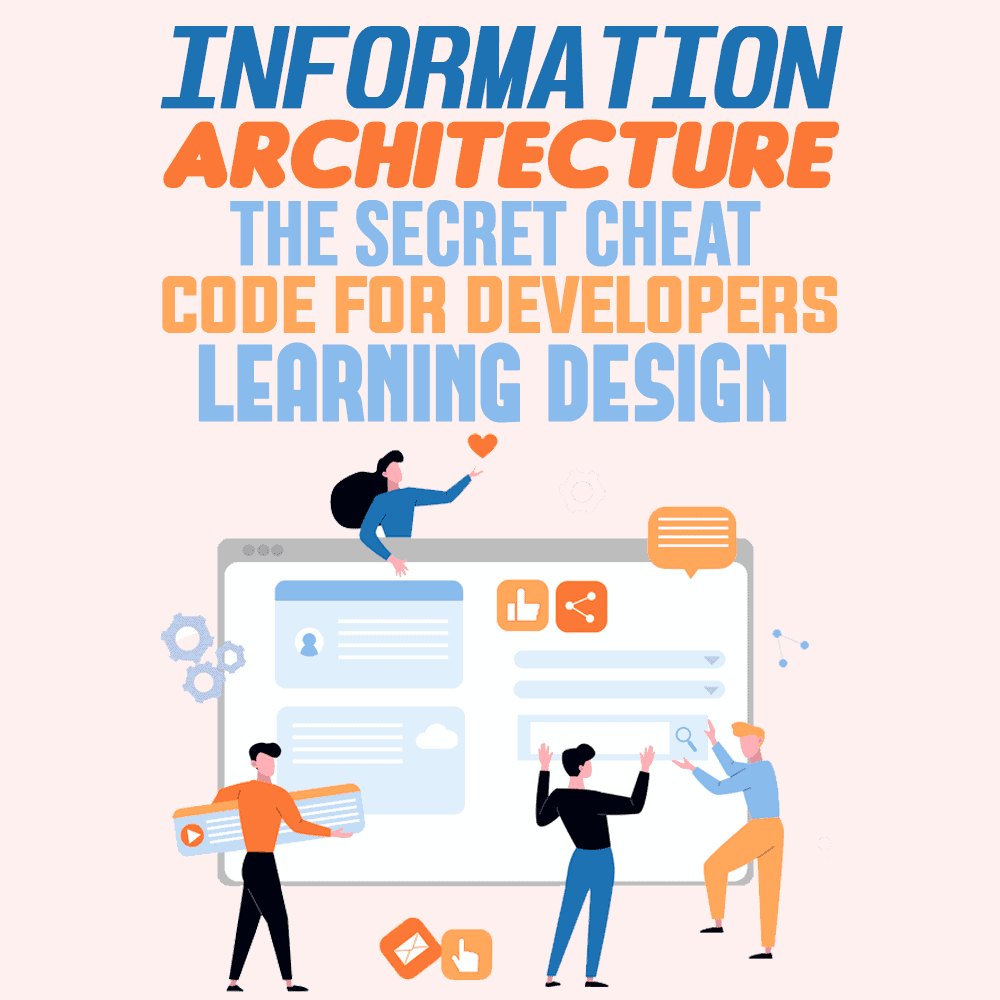
If, however, a designer were to say the above to you, your response would likely be very different. This is due to the fact that for developers programming solutions, the primary mode of thinking is logical, while for designers the primary thinking tool is intuition.
However, the key word here is primary.
There are some aspects of development that are intuitive. Likewise, as we will see in this post, there are also some aspects of design that are logical.
When approaching a new field of study, the best way to go about it is often with a constructivist approach. This simply means that as you learn, you leverage the knowledge or style of thinking that you already have in order to ease yourself into the new subject.
For a developer approaching design, the ideal strategy would be to start with the most logical concept within the field of design: information architecture.
Information Architecture, the Most Logical Design Concept
Google defines information architecture as the labelling and organizing of information structures. In essence, information structures are everything that has been or can be created. Within the context of this post, we will use the term to reference things such as websites, mobile apps, and the like.
Creating an information architecture comes down to figuring out the right questions to ask—the questions that solve the problem that you’re encountering. The next step is to structure the information in the best way for the use case, and solve it.
It is a relatively logical, programming-like process with some intuition tacked on. Which is what makes it the perfect starting point for a logical developer who is eager to learn design.
Leveraging the logic within design with this information-architecture-first strategy that we are laying out in this article will allow you to learn design in the fastest, most efficient way.
Leveraging Logic Within Design
Information architecture is the most logical part of the design process. Which is what makes it a great starting point for all developers who want to learn design.
In this context, perhaps the most important question within the process of designing a product is whether the product being designed actually solves the problem that is being encountered.
Because information architecture also rests on the most fundamental end of the design planning process, from the construction of an information architecture, to user flows, to the final implementation of the high-resolution design, it is at this level that the foundational question of whether or not the product solves the problem is also answered.
In other words, because the most important thing in the design of a product is solving the problem that the product is meant to solve, and it only is by the correct, logical use of information architecture that this can occur, information architecture is the most important part of the design process.
A firm grounding in information architecture gives you both the initial understanding of design necessary to build on, as well the keys to creating a design that works, ultimately solving the problem.
Creating an Information Architecture
When I started writing this post, I began by outlining the headings containing the key points that I would be covering throughout it, such as the heading that you see above.
This heading served as the initial “information architecture” scaffolding, within which I then wrote and fleshed out the article. It was a low-resolution ordering of the ideas or information that would be presented throughout the piece.
From this initial basis, I then gradually cascaded down into the writing, adding higher and higher resolutions of content or information, in order to complete the post.
In the same way, if I were creating a website, I would start with a sitemap, and from the pages within that sitemap, gradually begin to create higher resolution representations of those pages as wireframes. From there I could develop the specific, real-life elements that would ultimately make up the page, and then the website.
As you go deeper into the above process, the amount of intuition necessary to accomplish the final design increases.
But on a solid foundation of a good information architecture, which is simply an accurate understanding of how to structure information elements for the best user experience possible, this is a process that can be learned and then iterated upon with analysis and practice.
The design process can get complex as it progresses, but starting from the simple, low-res, bird’s-eye-view sitemap, which serves as the initial information, makes the process a lot simpler.
Best Places to Learn About Information Architecture
To get started on your journey toward a solid understanding of information architecture, it is best to start with more visual tutorials. This way, you can also get an understanding of the thought process that goes behind it.
These are some of best videos on information architecture on YouTube that truly focus on the fundamentals:
- Understanding Information Architecture – Brian Miller
- The Architecture Of Understanding – Peter Norville
- Pattern in Architecture – Christopher Alexander
- Designing With Forces: How To Apply Christopher Alexander In Everyday Work – Ryan Singer
If you’re looking for some great books on information architecture that explain the concepts in a great amount of detail, take a look at the following:
- Above The Fold – Brian Miller
- The Design Of Everyday Things – Don Norman
- Emotional Design – Don Norman
Mix Logic and Intuition for the Best Design

And remember, there are always more resources on the internet you can use as a guide for your next steps.
When learning something new, the best way to ease your understanding process and gradually gain an appreciation for the subject is to leverage knowledge patterns that you are already familiar with.
For developers, the best pattern is logic. And so, for a developer seeking to understand design—which requires both logic and intuition—it pays to start from the logical end of the spectrum, and from that foundation gradually work your way through until the more intuitive elements start to click.
I hope that this post has served as a great introduction to the concept of information architecture and will assist you in beginning the journey toward developing your own design intuition.
